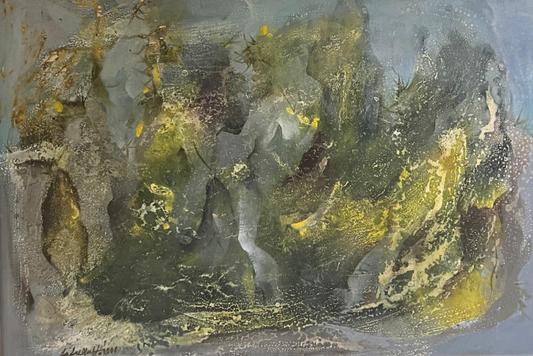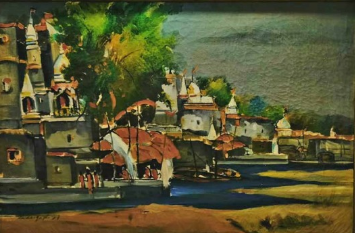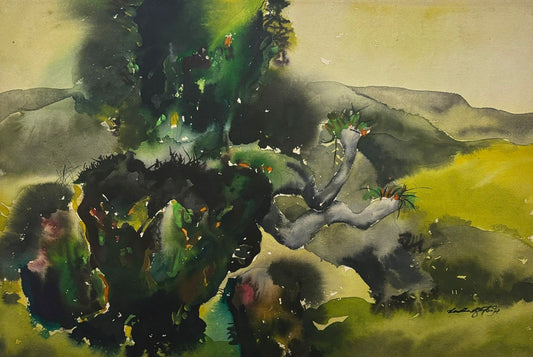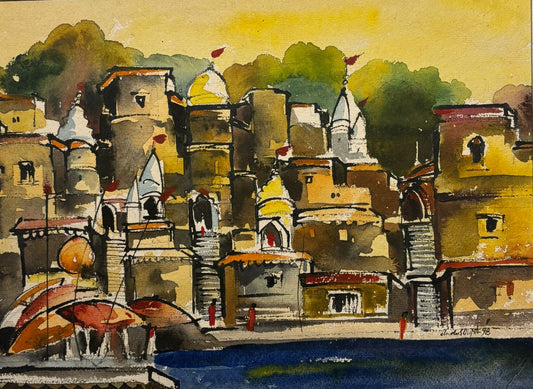
DILIP DAS GUPTA
Dilip Dasgupta’s art reveals a profound communion with nature, where landscapes become meditative realms infused with spiritual resonance. For nearly four decades, his evocative paintings have translated the physical world into experiences of quiet contemplation and lyrical grandeur. Born in 1931 in Simla (now Shimla), Himachal Pradesh, Dasgupta’s vision draws from his intimate connection to natural surroundings, transforming trees, mountains, and rivers into symbols of timeless presence and emotional depth.
His oil paintings are distinguished by majestic trees, their twisted, sinewy branches unfolding against sweeping mountain vistas. These works echo the grandeur and subtle lyricism of traditional oriental art, balancing bold forms with a lyrical sensitivity. In contrast, Dasgupta’s watercolors capture moments of stillness and mysticism, often portraying the sacred city of Varanasi. Scenes of ascetics meditating by the Ganges, temples shrouded in mist, and the river flowing silently evoke a sense of spiritual serenity. This duality, between the vivid energy of oils and the contemplative quietude of watercolors, reflects a nuanced sensitivity to nature’s multifaceted presence. Dasgupta’s artistic formation began in 1954 at Delhi Polytechnic, with further studies in Naples, Italy, broadening his cultural and artistic perspectives. Over the years, he has exhibited extensively, with more than fifty solo shows spanning India, Germany, Denmark, Malta, Nepal, and Italy. His work has garnered international acclaim, resonating with audiences for its profound emotional and aesthetic depth.
Beyond his personal achievements, Dasgupta’s impact extends through mentorship and collaboration. He played a significant role in shaping the early style of Sakti Burman, one of India’s prominent contemporary artists. During the 1950s, his shared studio with Sanat Kar fostered creative exchange that contributed to the evolution of the Indian modern art movement. Dilip Dasgupta’s oeuvre stands as a testament to mastery of form and a deep-rooted reverence for the natural world. His paintings invite viewers into spaces where the physical landscape and spiritual reflection intertwine, offering a sustained dialogue between the visible and the invisible. His enduring presence within Indian art continues to inspire and influence new generations, affirming his place as a seminal figure whose work bridges tradition and modernity with poetic eloquence.




